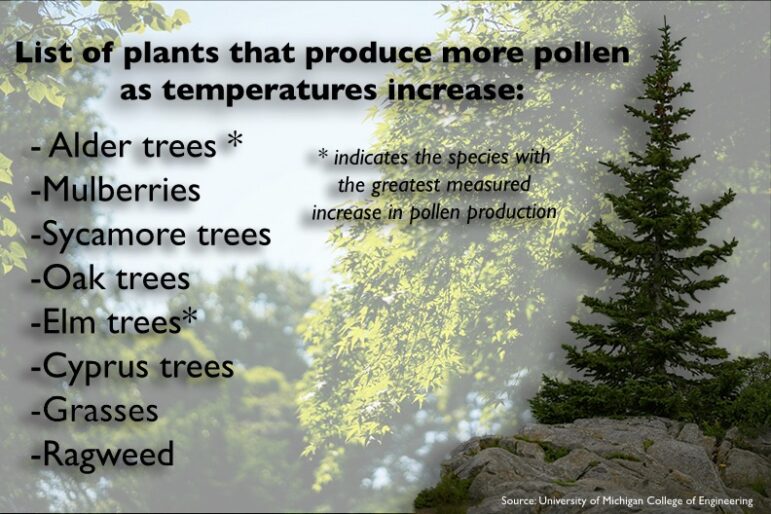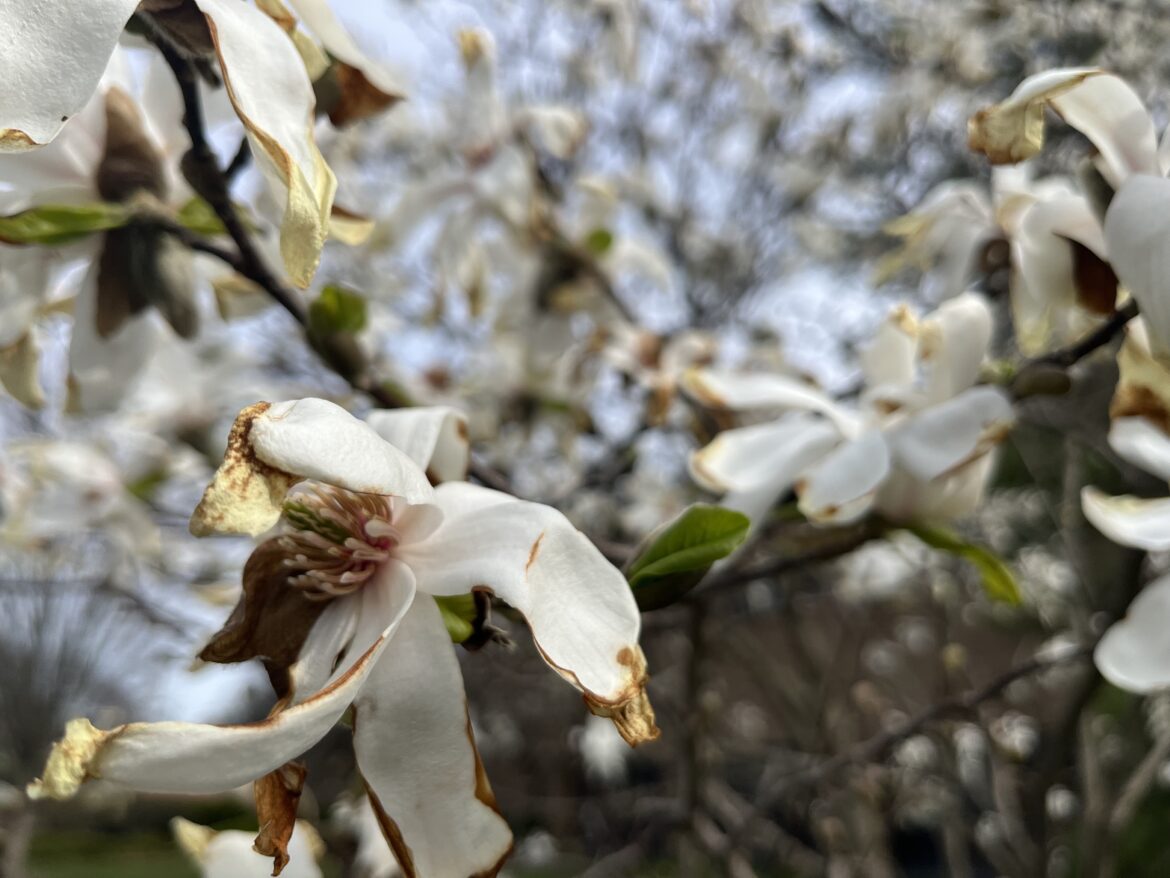Many look forward to the return of warm weather, sunnier days and the blooming of flowers. But one aspect of springtime is dreaded—the allergies.
This year, allergy season in the United States and Great Lakes region is expected to be longer and more severe, according to a statement by AccuWeather. The changing climate is to blame.
Climate change impacts allergy season by influencing when plants bloom, the length of pollen season and the amount of pollen released, said Yingxiao Zhang, a climate scientist and researcher working to develop pollen emission models at the University of Michigan.
“The entire pollen season is prolonged. Trees, they start to flower earlier,” Zhang said.
Trees that favor warmer conditions have longer pollen emission times. Longer growing seasons in turn lead to a longer pollination season, which means there is greater pollen emissions throughout the year.

Milder weather and Michigan’s warmest winter on record contributed to this year’s early bloom date, according to Bert Cregg, researcher and professor of horticulture and forestry at Michigan State University. Cregg reported that the bloom date was 10 days earlier than the historical average.
A common misconception is that flowering trees produce the most pollen. In reality, the worst offenders are wind-pollinated trees like conifers and deciduous trees like maple and hickory. They release massive amounts of pollen that are carried through the air by the wind in the hopes it will reach a female flower on another plant.
“When you see your windshield or the hood of your car yellow with pollen, it’s from those types of trees,” Cregg said.
Another misconception is the idea that male trees produce the most pollen and impact allergies the most. Most trees are not strictly male or female. Instead, they have both male and female flowers on different parts of the same tree. In reality, a tiny fraction of trees in the United States are solely male—less than four percent, Cregg said.
Increased allergies are a less talked about effect of climate change, but it affects wide areas that don’t see large natural disasters like melting glaciers or rising sea levels. Additionally, those who may not have had seasonal allergies in the past may begin to develop them due to the pollen count increasing and surpassing an individual’s “threshold” for tolerance, according to Zhang.
“Climate change’s effects are in the air—we can see more allergen particles in the air,” Zhang said.
Over one-quarter of adults and nearly one in five children in the U.S. suffer from seasonal allergies according to the 2021 CDC National Health Interview Survey.
Manoj Mohan, an immunologist at Okemos Allergy Center said he has seen an increased number of allergy patients throughout the last five to 10 years. He attributes this increase to climate change.
To combat seasonal allergies, Mohan recommends reducing exposure to the allergens, although it’s difficult. Keeping your windows closed, limiting time spent outside, washing clothes and bedding and showering frequently can reduce contact with pollen.
Over-the-counter allergy medications, nasal sprays and eye drops can help mitigate symptoms. “Priming” or the action of taking over-the-counter allergy medication months before pollen emission starts can help reduce or eliminate symptoms of allergies once allergy season starts, Mohan said.
If over-the-counter medications do not help reduce symptoms, immunotherapy is the last option which involves a series of injections.
“Don’t be afraid to contact primary care or an allergist because they can help make symptoms better,” Mohan said. “And don’t let allergies control your daily routine or life—everyone should enjoy the spring.”
